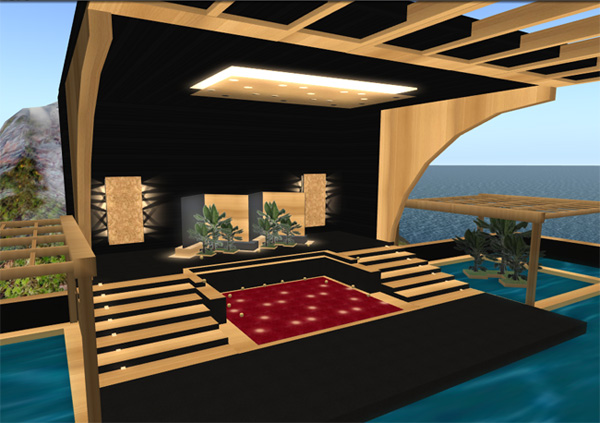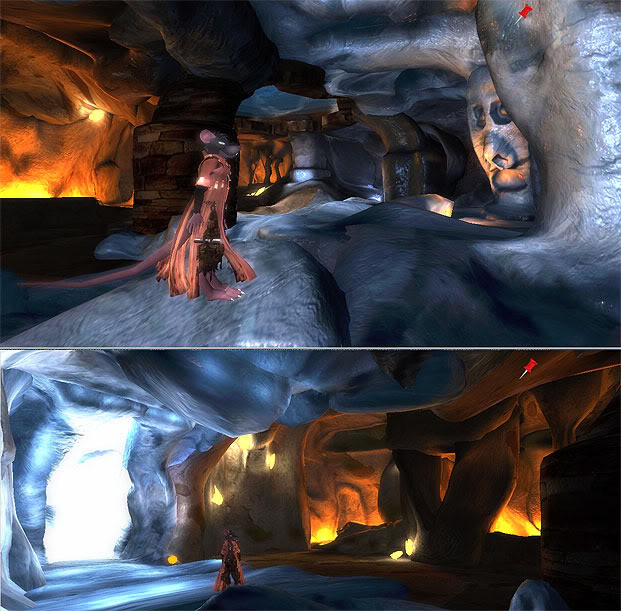Now Viewing: E-Portfolio >> Second Life Projects >> NMU Speech-Language & Hearing Virtual Clinic
NMU Speech-Language & Hearing Virtual Clinic
Demonstration videos:
This page features demonstration videos streamed via YouTube in 720p High Definition (HD) for users who are accessing this page via broadband. If a video is taking too long to load, look near the bottom right of the video screen and press the red HD button; this will turn off HD for faster loading at the expense of video quality. Pressing the HD button again will re-enable HD streaming.
A text-based narration (the large "text" button) is also available for lower end computers or connections, or for people who might not have time to watch an hour or more of material. As this project is extensive and ongoing, videos will be added or updated as necessary.
NOTE: These pages are best viewed with Firefox. Some Internet Explorer users may need to allow Java/ActiveX in order to view the video/narration pop-ups correctly. If a small bar appears at the top of your window, click it and select "Allow Blocked Content." Alternatively, you can use any "Not Working?" link located below each graphic, which will open in a new window.
IMPORTANT UPDATE 12/1/11: The speech clinic has been closed for over a year now. The clinic's last updates were not get recorded. After the list of videos below, you will see a series of screenshots that explain what some of these final features were.
Introduction
Summary:
- Welcome to Northern Michigan University's Speech-Language & Hearing Virtual Clinic. From the moment you appear on this teleport platform, there will be many areas to explore. These demonstration videos will highlight the functionality of various exhibits, from the fact-cicle ice cave to the interactive anatomy tests for our larynx models.
The Virtual Clinic
Summary:
- Explains the role of the NMU S-L&C Virtual Clinic as a learning and recruiting tool.
- Demonstrates the merits of creating a photoreal environment despite the limitations of the Second Life graphics engine.
- Showcases the various rooms and some of their functions.
Communicative AI Demo
Summary:
- In-depth look at how two AI, named Megan and Brandon, are able to answer questions and exhibit various stuttering symptoms through their use of punctuation.
THe Larynx Models
Summary:
- Provides an overview of the Voice Education Center, which utilizes student-created PowerPoint presentations.
- Demonstrates the interactive testing system for Larynx A--as well as a brief look at the animated vocal folds.
- Demonstrates a special testing system for Larynx A that studies the comparison between short-term learning between in 3D vs. 2D methods.
- Showcases the three animation cycles of Larynx B.
Newer Upgrades Not Recorded:
The stutterbots were upgraded to make use of NMU's podcast server. Once a question was asked, the bots would play an audio file of the real disfluency occuring naturally in a sentence. These bots were stored on platforms organized by groups of two students. One such platform is pictured below:

I created an ice cave or, as Jim liked to call it, a "Fact-cicle Ice Cave." The large block of ice in the center of the room represents a disfluency known as a block: when words literally become trapped in the throat. Twenty icicles were placed around the block to match the order in which a patient works with each idea and technique to overcome their disfluency. By touching the fact-cicle, the object asks the user a true or false question. Once answered, the user is given a URL to visit for more information about the topic. Here is a shot of the ice cave:

The above environment was created in Maya and texture baked to create the illusion of a complex 3D render. This was my first attempt at trying to bring 3D scenes into Second Life. A few months later, I designed the Lava & Ice Cave Lounge. I created this environment because the students did not like spending their online discussions in the photoreal replica of the clinic; they had to deal with the real clinic for eight or ten hours each day. By creating an impossible atmosphere, they were much more engaged during their discussions. Unfortunately, my cave pushed SL too hard and a lot of students would crash after a few minutes. The lectures were moved onto a tropical island instead. To create the environment, I modeled 80 sculpts in Maya, created my materials, did some light painting, and then baked all of those textures and applied them to sculpted objects within Second Life.

The pop-up code on this page was used with the resources created and provided by Patrick Burt. Click here to be taken to his article.


